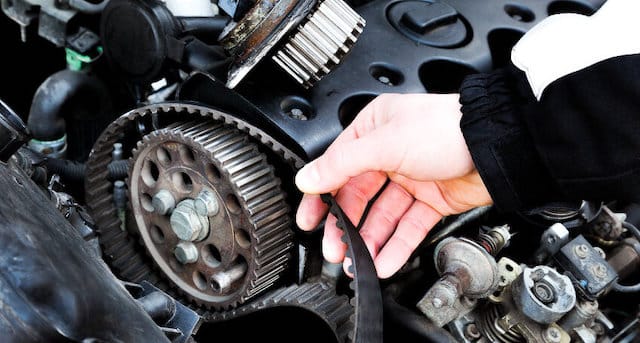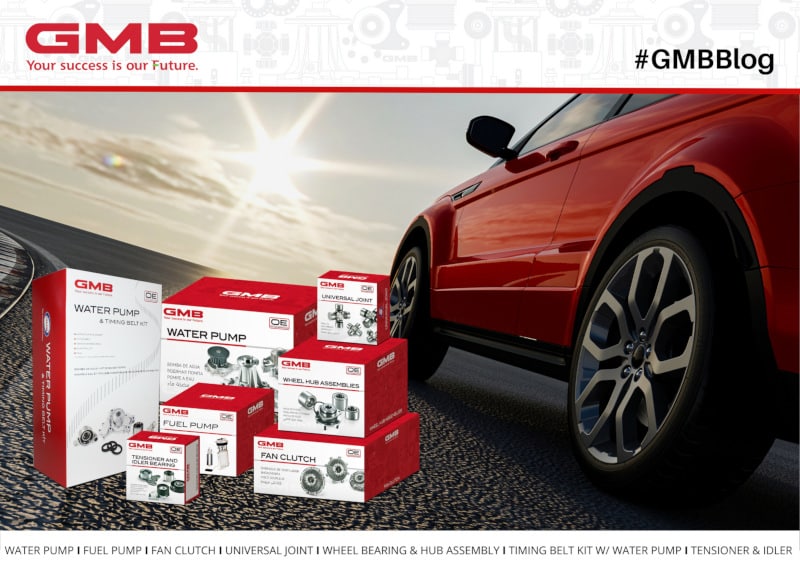OEM Manufacturers Continue To Extend The Lifespan Of Timing Belt- What You Need To Know
Car parts are always evolving to become more durable, reliable, and long-lasting. Timing belts seem like parts that don’t need design updates. Yet, OEM manufacturers are always looking for ways to prolong the lifespan of their timing belts.
OEM Manufacturers Continue To Extend The Lifespan Of Timing Belts

Several OEM manufacturers have managed to stretch timing belt replacement intervals from 60,000 miles to more than 100,000 miles. They did this by:
Improving the belt design and materials. OEM manufacturers are using more durable materials that extend the belts’ lifespan. The rubber used in the belt has been changed to better handle high heat under the hood. Tooth faces are coated with nylon as it wears longer than rubber. In some belts, friction modifiers, like PTFE, are added to the belt to reduce wear.
Using better timing belt tensioners. When a timing belt tensioner fails, it can no longer provide the tension the timing belt needs to work properly. As a result, the timing belt fails too. OEM manufacturers have gotten rid of the older, less durable tensioners. Then they replaced them with tensioners with a more durable design. These can provide proper tension for a longer period of time.
Using more efficient water pump designs.
The water pump requires a lot of power to turn, so it places a large load on the timing belt. OEM manufacturers have redesigned water pumps to require less power to operate. This helps extend the life of the timing belt. (Note that not all engines use the timing belt to drive the water pump. This is more common on newer engine designs.)
Improving the timing belt path. Timing belts run over several pulleys. OEM’s have redesigned the pulleys to be as large in diameter as possible. A larger diameter pulley causes less wear on a belt than a smaller pulley. This is because the belt has to bend less as it passes over a larger pulley versus a smaller pulley.
What You Can Do To Prolong The Lifespan Of Your Customers’ Timing Belts

Your customers’ vehicles rely on the timing belt to drive the camshaft. If the belt fails, the engine can suffer severe damage. That’s why you need to help your customers prolong the lifespan of their timing belts as much as possible. OEM manufacturers have made it possible for timing belts to last as long as 100,000 miles. Yet, you still need to do your part to ensure that your customers’ new timing belt last that long. There is one way you can do that. When it comes time to replace the timing belt, it is critical to replace the following parts too:
- Idler pulley
- Water pump
- Timing belt tensioner
These parts may seem ok while you are changing the belt at 90,000 miles. But it’s very unlikely they will last until the next timing belt change at 180,000 miles or so. When one of these parts fails, it can cause the timing belt to wear prematurely or fail. An example of a worst case situation would be the water pump seizing. If the water pump seizes, it can shear teeth off of the timing belt. This causes the belt to slip, and engine is damaged instantly.
It’s also worth noting that if you need to replace the water pump, replace the timing belt too. Chances are if a water pump fails, the timing belt isn’t too far behind. Here are 4 tips for replacing a timing belt and water pump together.
Replace Worn Belts And Related Parts With OEM Or OE-Quality Parts
When your customers bring their cars in for service, you should always recommend OEM or OE-quality replacement parts. Let’s say that the timing belt is still in good shape, but one of the related parts (for example, the tensioner) is failing. Replacing it with an OEM or OE-quality part will ensure that it’ll last. This ensures that the timing belt will last much longer, too.
GMB is an OEM equipment supplier. The parts we produce are often the same parts that are labeled as OEM parts. Installing a GMB part in a customer’s vehicle is just as good as installing an OEM part.
Key Takeaway
The most important thing to do is to keep timing belt longevity in mind when servicing it. Always replace the tensioner, idler, and water pump along with the timing belt.
MORE CONTENT
Stay current!
Sign up here to get the latest news
and updates on all things GMB.
Sign Up To Receive GMB News & Updates!

